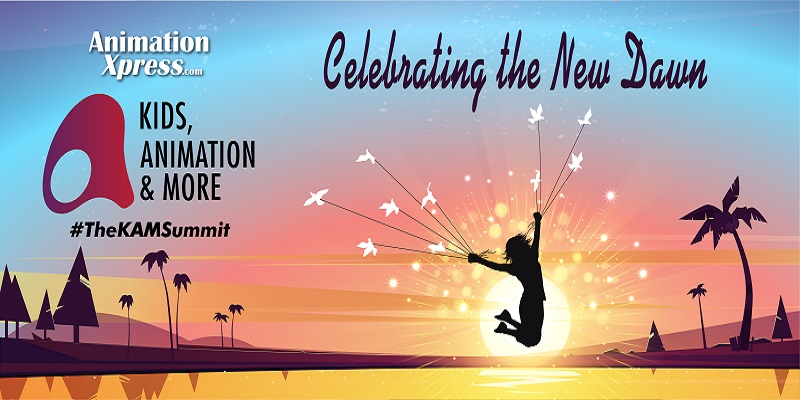
KAM Summit 2022 included multiple insightful panel discussions covering the kids’ animation industry and one of the most relevant sessions was a panel discussion on the topic: boarding the brand bus. Compared to the other genres, the kids’ category is still considered under-indexed when it comes to revenue and investments. However, with an increase in the kids’ viewership, brands are now setting their foot in this category and are exploring various innovative ways to make the most of this sector. Also, with the stars of social media becoming important influencers for the consumption decisions of the young audiences, the marketing strategies of the brands are evolving and how!
The speakers of the session were: Parle senior category head Krishnarao Buddha, Kidzania marketing director Tarandeep Singh Sekhon, Viacom18 head of marketing Kids TV network Sonali Bhattacharya, and brand-building.com founder and independent brand coach Ambi Parameswaran. The session was moderated by GroupM South Asia head (sports, esports and entertainment) Vinit Karnik.
Live-action has been the go-to medium to capture the pulse of the viewer. If it’s real, it’s believable. But, the pandemic has increased the scale of opportunity towards animation. Speaking from experience, Parameswaran said, “The issues with the kid category, although the category is big, is that not all brands are actively spending on advertisements. Kids tend to consume advertising like content. They don’t see a difference between an advertisement and an animation program.” He went on to explain how the release of an ad for a new product isn’t a good idea during school holidays. Whereas, if a new ad is launched during regular school days and if it resonates with the little ones, word of mouth is going to do wonders in favour of the ad.
When people are working from home, stuck in front of the idiot box due to the pandemic, there cannot be a better time to broadcast advertisements when the target audience is waiting to absorb content. Bhattacharya added, “Kids as a target audience can be divided into three mini target groups: four years, eight years and the 12-year-olds. And, the learning curve has risen in the past two years of lockdown. There is a surge in adulting in kids. They are exposed to the grim realities of the world while being cooped up in their homes with parents. Part of them grew overnight, part of them still wanted to be the rebellious child. So, the brands need to put out ads that are innovative. The TG group is dynamic and thus, the content has to work on all platforms.”
Lockdowns in most parts of India required the ad agencies to resort to plan-B; something that can keep the advertisement storyline intact, will require zero shooting, and give the audience content they could relate to. Through some outside the box thinking, tweaking the content creation aspect and establishing animation as a storytelling medium, you can carve a niche for yourself in the kids’ category. Commenting on the same, Sekhon said, “We’ve launched six experiences post-Covid. We use vision clues to add to the experience. We are resorting to experiences built into the fugitive world, and kids are absolutely loving it. The number of kids visiting the establishment exponentially increased once they got a chance to make stories with Suppandi, for example, compared to earlier when it wasn’t a branded experience for them.” Sekhon beautifully explained how using animation in various experiences will have the audience stay.
Animation simplifies complex topics and isn’t bound by logistical constraints. Animation advertising amplifies the message through its distinctive style. It makes the message stand out among the clutter. Talking about what’s been Parle’s forte, Buddha said, “Currently, 40–50 per cent of our products are targeted at kids, and based on the ratio, we are trying to appease that audience via TV ads in kids genre and any and every platform available. Word of mouth is extremely important. Innovation and novel ideas go a long way. An innovative concept, as long as it is viable and feasible, is going to be a win-win. More and more marketers and advertisers are going to pump in and add dollars on such collaborations.”
At the present moment, India is doing really well when it comes to tapping the right advertisements for the kids’ genre. The animation is great as well, has grown over the years, and is finally matching international standards, if not doing better. Bhattacharya proudly added, “On one end of the spectrum you have local IPs like Chhota Bheem and Motu Patlu being used effectively. If you look at the trend, in the last three-four years, on an average, broadcasters are launching six-seven local IPs in the form of new shows every year, and this is an under-estimation. That’s really encouraging for India and not to forget that our content is travelling abroad as well, which is wonderful!”
The panel discussed the huge demand increase for anime and acquired content that is excellently dubbed in India in the local languages and put out on all the platforms. Such content is doing really well too. Acquired content dubbed locally, gives it an Indian twist and the audiences are loving it. Also, as consumers become more knowledgeable, more brands will emerge and eventually the brandification index will go up. This is going to provide great opportunities to both the animators and the advertisers.
To conclude, we’d like to quote Karnik, “The opportunities are immense. The creator community has to think innovative, disruptive, and radical – that is the only way to increase the pie. The industry is ready to spend – it’s about the top idea that will bring that money to the table.” And well, we couldn’t agree more.
Here’s hoping that the advertising pie increases, since it is only going to give birth to better content!
